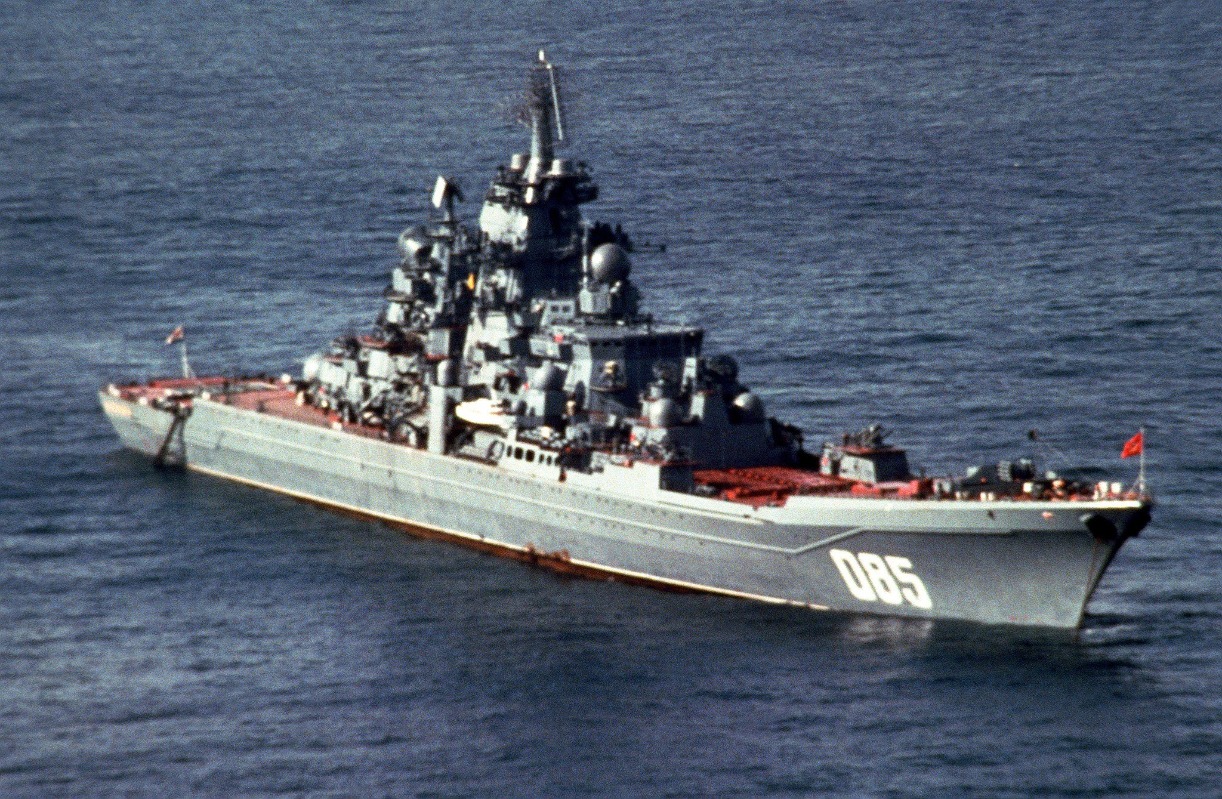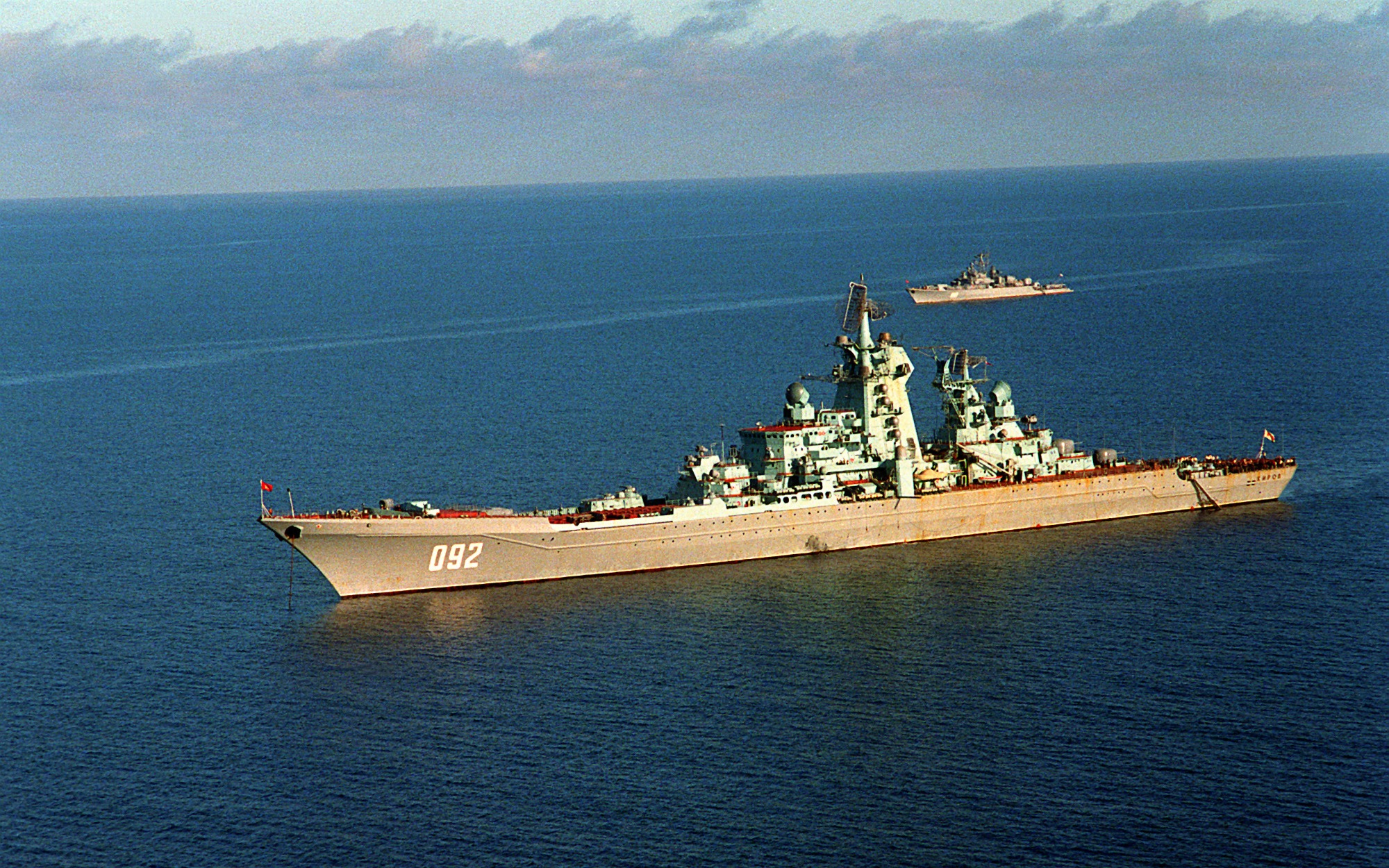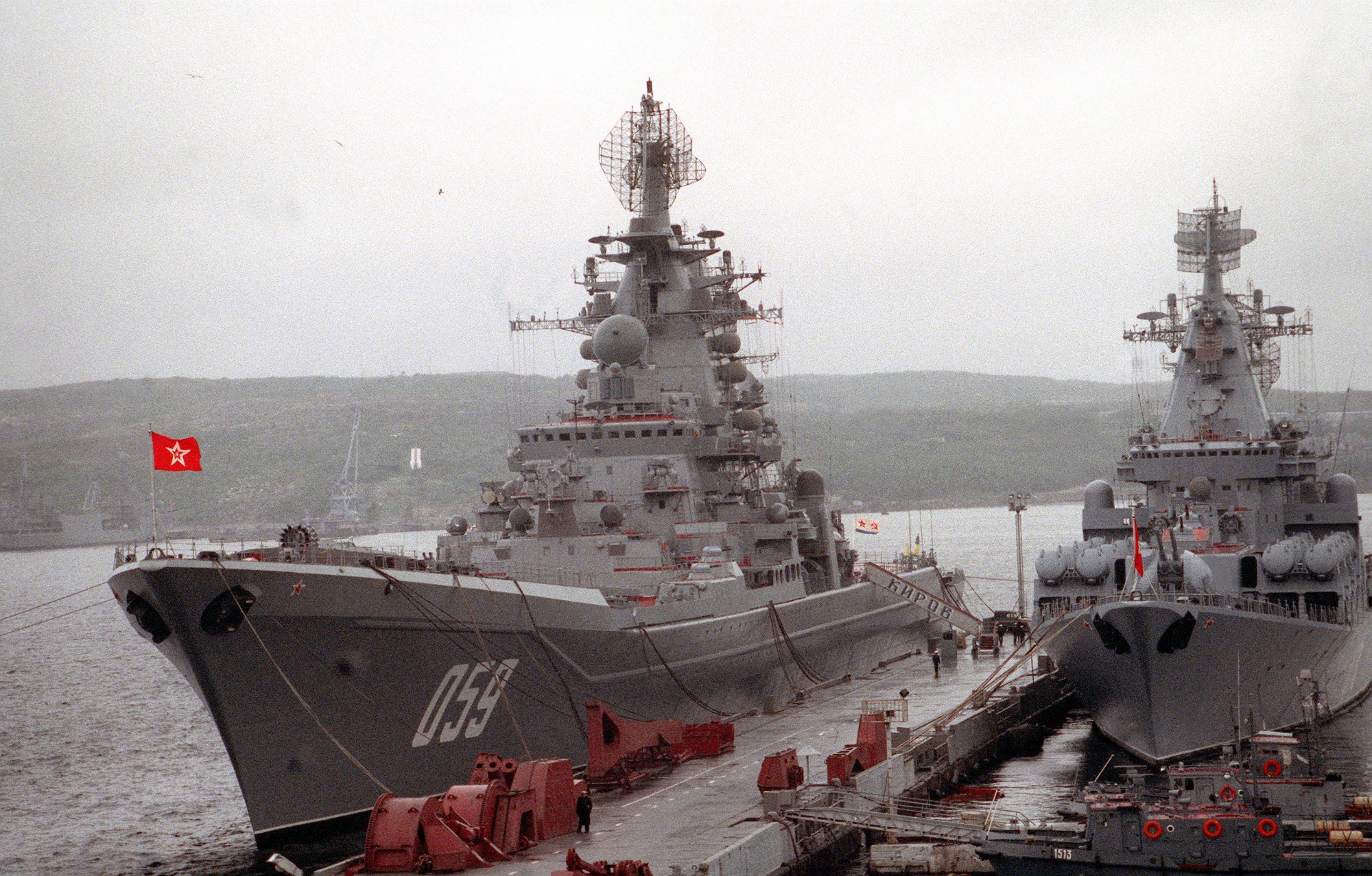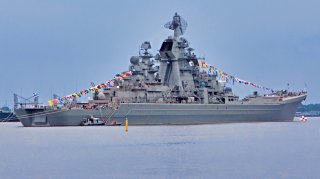Russia's Kirov-Class Battlecruisers: Will They Sail Again?
The Russian Navy's Kirov-class battlecruisers, despite their formidable design and armament, have proven to be a costly misadventure.
Summary and Key Points: The Russian Navy's Kirov-class battlecruisers, despite their formidable design and armament, have proven to be a costly misadventure.

-With only one operational vessel left, the fleet's modernization efforts have been slow and plagued by delays. The first two ships have been scrapped, and the third, Admiral Nakhimov, has been docked for repairs since 1999. Although plans exist to modernize the fleet, the process is expected to be lengthy and challenging.
-The operational future of these massive warships remains uncertain, reflecting broader struggles within the Russian Navy.
Russian Navy's Kirov-Class: Modernization Efforts Hit Major Snags
The Russian Navy is arguably in its poorest state since it was first formed in 1696. Though it has taken great efforts to modernize the fleet, the ongoing efforts have often shown little to no progress at times. This is most notable with Russia's battlecruisers – the Kremlin's largest warships, and the heaviest surface combatants in operation in the world.
Though smaller vessels, armed with advanced guided missiles, reached the level of firepower that was once the domain of big gun battleships, during the Cold War, the Soviet Union set out to prove that there was still a place for large warships in the modern world.
A total of four (of a planned five) nuclear-powered Project 1144 Orlan Kirov-class guided-missile cruisers were constructed between 1974 and 1998 – and the introduction of the lead vessel even played a key role in the re-commissioning of the United States Navy's Iowa-class battleships in the 1980s.
Moreover, the vessels never lived up to the hype.
Kirov-Class: Large Surface Combatant Battlecruiser
When the Soviet Union launched the Kirov in December 1977, she was the largest warship, apart from an aircraft carrier, to be built by any nation since just after the Second World War when the Royal Navy's HMS Vanguard (23) entered service.

Naval experts quickly noted that the Soviet vessel was reminiscent of the battlecruisers of bygone years – albeit far more advanced.
The nuclear-powered warship carried a formidable array of sensors, including air/surfaced search radar, fire control radar, and hull-mounted sonar.
Her propulsion system was based on a combination of nuclear power and steam turbine with two nuclear reactors coupled to two oil-fired boilers, which could allow the ship to cruise along at a top speed of up to thirty-one knots.
The Shipwrecker?
Instead of big guns that were common on battlecruisers, the primary armament of the Kirov-class was the "Granit" (NATO reporting name SS-N-19 "Shipwreck") long-range anti-ship missiles. Twenty launchers were installed under the upper deck, mounted at a 60-degree angle.
Though the long-range missiles could not be controlled once launched, they had what was known as a "multi-variant target engagement program," which allowed the missiles to share information while in flight. The lead missile assumed a high-level flight trajectory, enabling it to increase its target acquisition capability, while the other missiles followed a lower level. If the lead missile was destroyed, another of the missiles would automatically assume the lead role.
The Kirov-Class was also equipped with a twin RPK-3 Metel (NATO reporting name SSN-N-14 "Silex"), and was further armed with ten RPK-2 Vyuga (SSN-N-15 "Starfish") launched via 533mm (21-inch) torpedo tubes.
Area air defense was also provided by vertical launch S-300F Fort (SA-N-6) long-range surface-to-air missiles, housed in a total of 96 launchers forward of the P-700 Granit bins, and close-in air defense was handled by a mix of Osa-M (SA-N-4 or Gecko) missiles 30 mm Close In Weapon Systems (CIWS) and 130 mm Dual-Purpose (DP) guns.
As previously reported, on paper at least, the Project 1144 class was armed to the teeth in order to handle virtually any surface combatant scenario.
Most of the weapons systems are located forward of the massive superstructure, while the stern was employed to house machinery and a below-deck helicopter hangar, which accesses the flight deck via a lift.
Three helicopters could also be carried – serving in both anti-submarine and missile-guidance/electronic intelligence roles with the latter providing target data for the Granits.
C3 Flagships
Three additional Kirov-class ships, Frunze, Kalinin, and Yuri Andropov (later renamed to Admiral Lazarev, Admiral Nakhimov, and, Petr Velikiy respectively), were laid down through 1986.
The vessels offered space for command, control and communication (C3) – and could thus serve as effective fleet flagships in wartime – and one of the intended missions could have been to serve as a task group command escort to the Soviet Navy's aircraft carriers that Moscow planned to build in the 1980s.
Kirov-Class: Wrong Direction for the Soviet Navy
Though as large as actual battlecruisers, the vessels were likely a costly mistake for the Soviet Union. It is doubtful that four such warships could have tipped the balance in Moscow's favor in a war with NATO.
The first two of the Kirov-class have been retired and have been scrapped. The third vessel, commissioned in 1988 and currently named Admiral Nakhimov, has rarely been deployed to sea and since 1999, had been permanently docked in Sevmash to await repairs. Only in 2006 was a decision made to modernize the ship.
Its refit has been in a word: slow.
Lengthy Refit
While the original plan was to have the ship back in service by 2012, the project has had numerous stops and starts, and the current timeline suggests that the guided-missile cruiser won't be returned to service in 2024 at the earliest, but the odds are that it could still be years before she heads back to sea.
Once Admiral Nakhimov finally is in operation again, the plan is then to send Pyotr Velikiy – the ex-Yuriy Andropov – to undergo her own refit and upgrade. Currently operational as the flagship of the Russian Navy's Northern Fleet, she is Moscow's largest warship in service. However, she has mainly taken part in drills in the Barents Sea or has remained in port.

Though a capable warship in the late Cold War, she is largely considered past her prime. Russia may hope to extend her operational life with a refit, yet, the question is how long such an endeavor may take – and it is quite likely that if this warship heads to port for an upgrade, it may likely never return to service.
Author Experience and Expertise: Peter Suciu
Peter Suciu is a Michigan-based writer. He has contributed to more than four dozen magazines, newspapers, and websites with over 3,200 published pieces over a twenty-year career in journalism. He regularly writes about military hardware, firearms history, cybersecurity, politics, and international affairs. Peter is also a Contributing Writer for Forbes and Clearance Jobs. You can follow him on Twitter: @PeterSuciu.
All images are Creative Commons or Shutterstock.
From the Vault
Russia Freaked Out: Why the U.S. Navy 'Unretired' the Iowa-Class Battleships
Battleship vs. Battlecruiser: Iowa-Class vs. Russia's Kirov-Class (Who Wins?)


